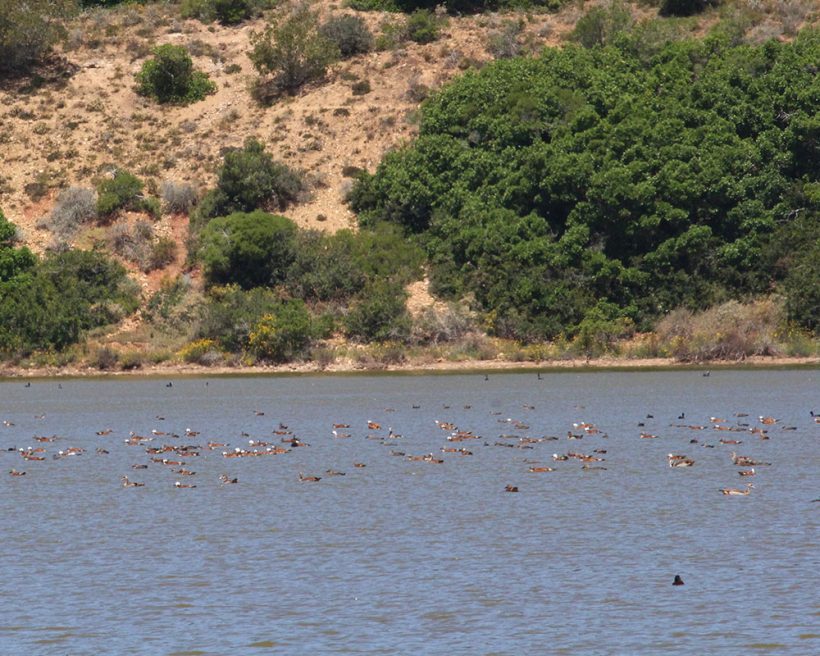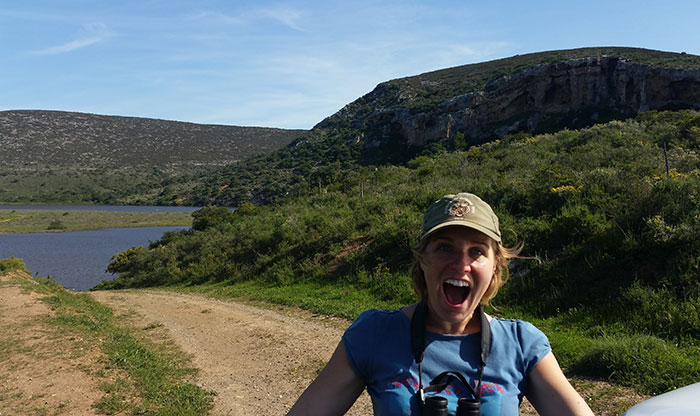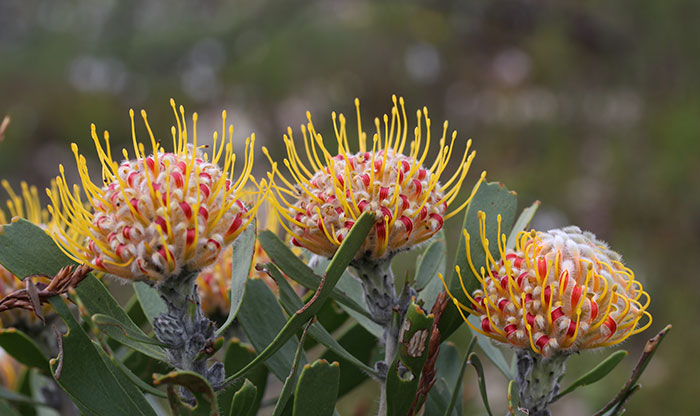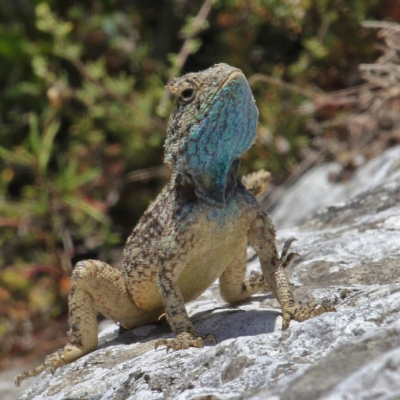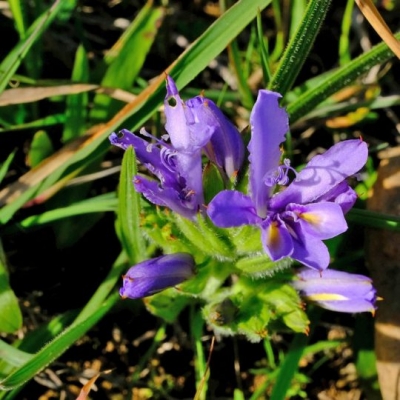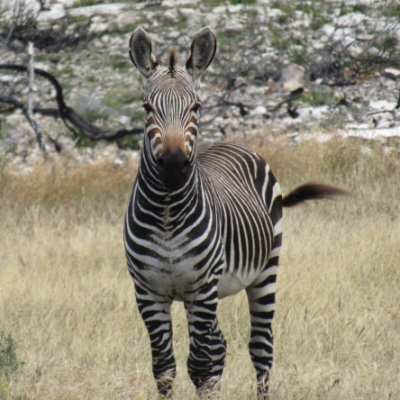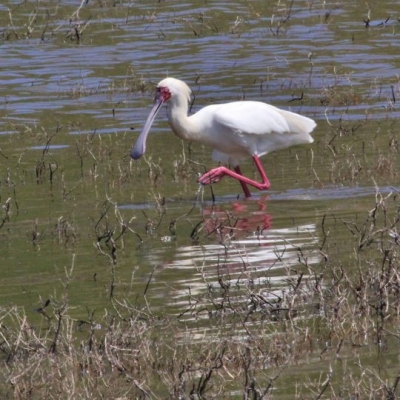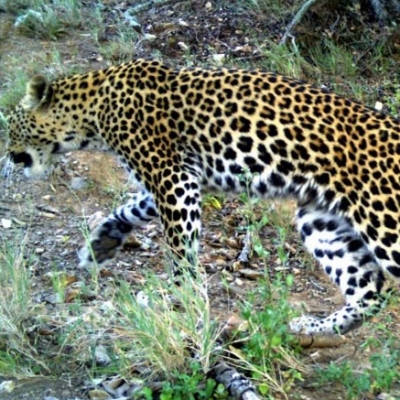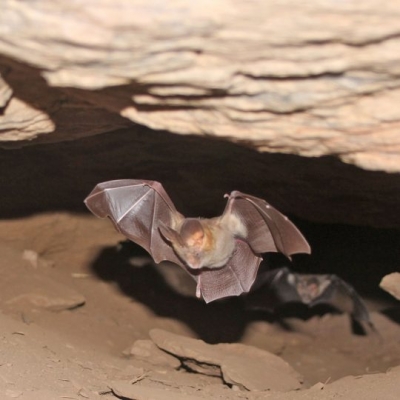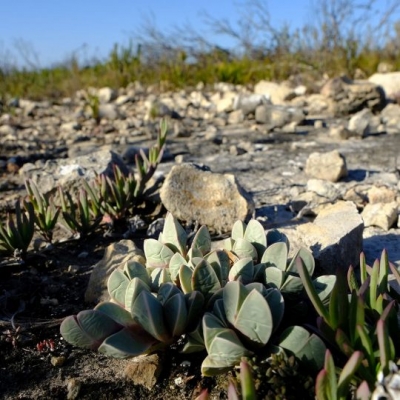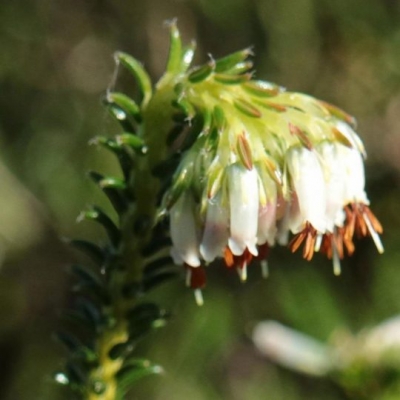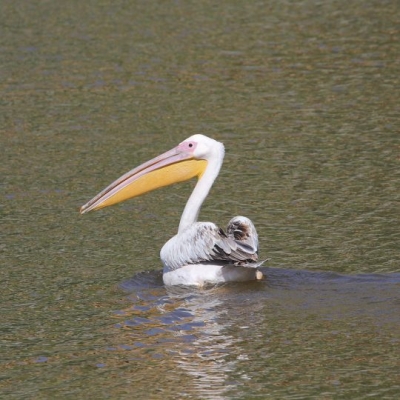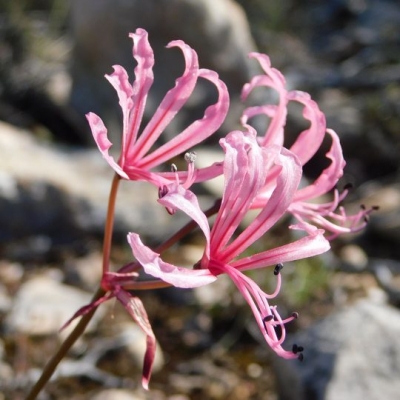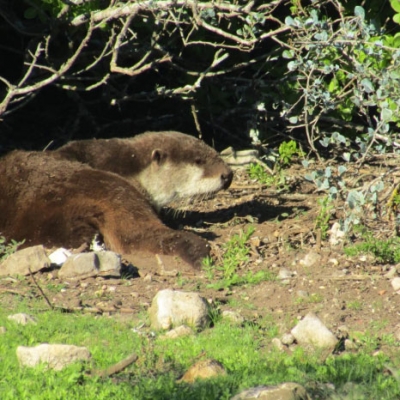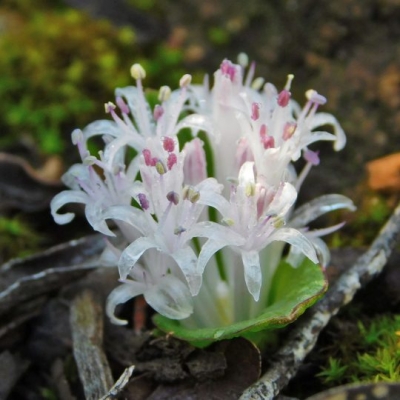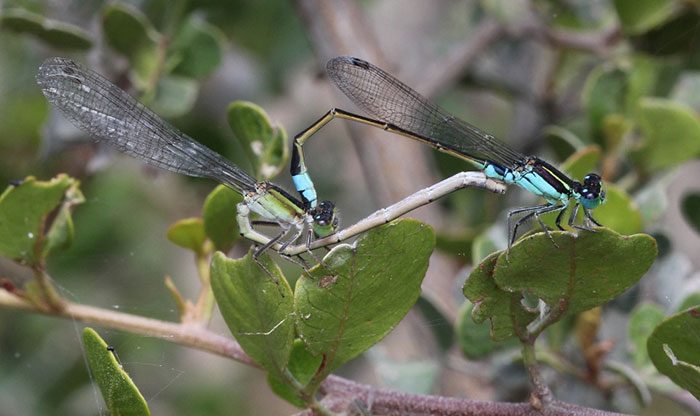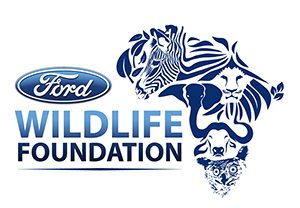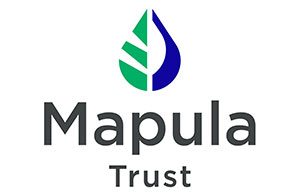With a new conservation easement signed, the Overberg Renosterveld Conservation Trust (ORCT) takes a step closer to realising a conservation dream: To protect and restore the entire length of the Sout River (Salt River) in the Overberg forever.
The new easement, called the Vogelrivier Conservation Easement, brings 2581 hectares of natural habitat into the ORCT’s Conservation Easement Programme, to be protected in perpetuity. This site is important for many reasons, in particular given that it includes the De Hoop Vlei, a declared Ramsar site. This property also provides a crucial corridor between the vlei and the eastern Rûens.
Above: Odette’s face the first time that she saw Koleskloof
According to ORCT Director, Odette Curtis-Scott, with the new signing, the ORCT is taking a step towards reaching our dream.
“We had already secured much of the headwaters of the Sout River through the signing of the Kleindam easement, as well as some important sites along the river (Kykoedie and Keykas easements) Now with Vogelrivier, we have secured the end of the river, leading into the De Hoop Vlei. We’re slowly bringing the pieces of the puzzle together. Our dream is to work with farmers to bring the whole river into this level of protection and restore it.”
Above: Leucospermum cf. truncatum
The easement site has been identified by both CapeNature and the Table Mountain Fund in its Climate Corridor Action Plan as a vital biodiversity site.
Chris Martens, Fynbos Trust Managing Director, who is responsible for managing the Vogelrivier property (also known as Koleskloof farm), says it was bought for conservation purposes by Peter and Claudia Krcmar in 2016. “It’s an incredibly important piece of land in terms of biodiversity.
“The property adjoins the De Hoop Nature Reserve and is part of the De Hoop Vlei, which makes it a highly valuable conservation site. The vlei and surrounds should be well managed both in its headwaters on Vogelrivier as well as the portion on De Hoop Nature Reserve. It’s a Ramsar site on the De Hoop side, but not on our side. So by signing this easement, we’re showing our commitment to the long-term conservation of the site,” Chris says.
The De Hoop Nature Reserve is also designated as an Important Biodiversity Area by BirdLife South Africa. The easement therefore secures the only remaining privately-owned section of the De Hoop Vlei.
The farm is home to a significant number of threatened and endangered species. Botanical gems such as the Endangered Erica radicans ssp. schlechteri, the Rare Erica sperata and the Near Threatened Jamesbrittenia calciphila all occur here.
It’s also a wildlife hub, especially for bird populations.
According to Chris, the property was named Vogelrivier “because it’s an important site for birds, especially for Paleartic migrants, such as Grebes, several visiting and resident waders and waterfowl, and nomadic species such as Flamingos and Pelicans.” A number of interesting terrestrial bird species have also only been recorded on this property, such as the White-fronted Bee-eater and Olive Bush Shrike.
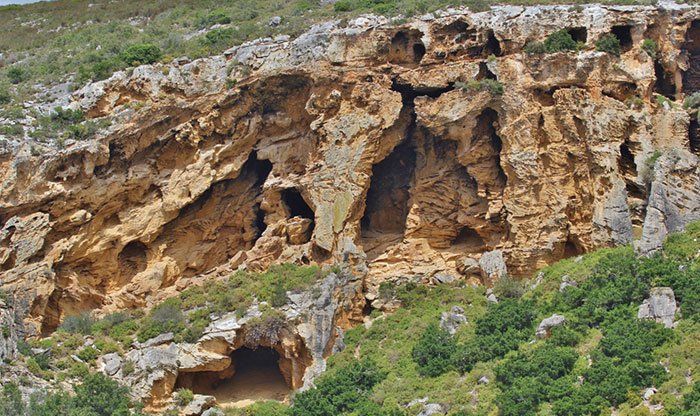 Mammals such as the Endangered Cape Mountain Zebra, Vulnerable Cape Leopard, Near Threatened Cape Clawless Otter and a range of threatened bat species are also found here, many moving between the De Hoop Nature Reserve and Vogelrivier.
Mammals such as the Endangered Cape Mountain Zebra, Vulnerable Cape Leopard, Near Threatened Cape Clawless Otter and a range of threatened bat species are also found here, many moving between the De Hoop Nature Reserve and Vogelrivier.
The total area signed into a conservation easement consists of 2088 hectares of De Hoop Limestone Fynbos, 170 hectares of Cape Lowland Freshwater Wetlands and 129 hectares of Critically Endangered Eastern Rûens Shale Renosterveld.
The Fynbos Trust was started by Peter and Claudia Krcmar, and through their funding support, the property is being carefully managed, with invasive alien plants being cleared along the vlei. Chris says, “In fact, the funding support of the Krcmars has been enabled by far-sighted German fiscal policies, which allows them to spend money in South Africa for conservation purposes.”
Above: Chris Martens (right) of the Fynbos Trust signs the easement with the ORCT’s Grant Forbes.
With the latest conservation easement signing, the ORCT now has around 6000 hectares of natural habitat included in the easement programme, including 3600 of Critically Endangered Renosterveld that are therefore protected forever.
Our thanks to WWF South Africa, the Hans Hoheisen Charitable Trust, the Mapula Trust and the Ford Wildlife Foundation for their support on our Conservation Easement Programme.

